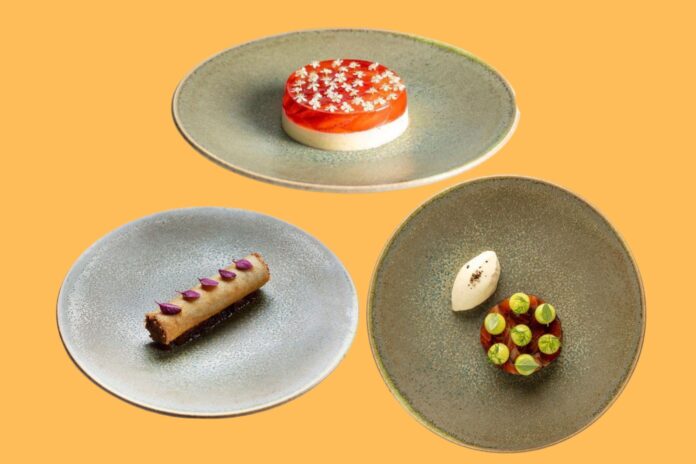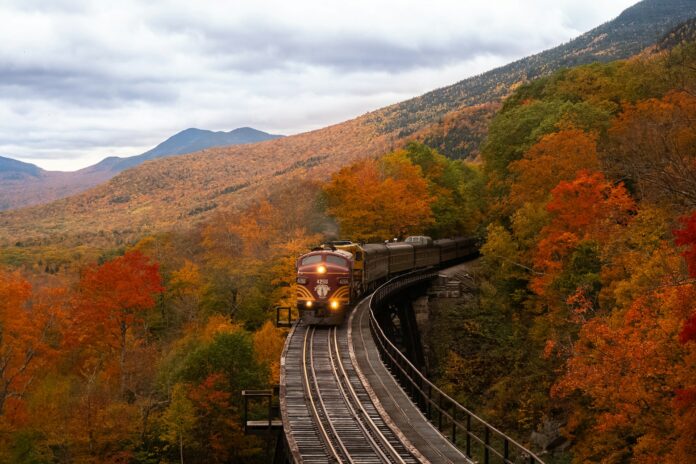Europe’s busiest and most significant waterway, the Rhine River begins in the Swiss Alps as nothing more than a stream. Building momentum at Lake Constance, which borders Germany, Switzerland and Austria, the Rhine then becomes the frontier separating France to the west and Germany to the east, and is a crucial shipping and trade route as a result.
As it picks up steam heading north, it enters the Netherlands, making for Rotterdam and eventually, the North Sea. Along its journey, the Rhine covers over 1’200 kilometres and passes through four countries, enjoying significant geographical changes and shifts in culture to match. We highlight this expansive voyage because all of this traversing and travelling makes for one mighty fine idea for a holiday; a Rhine River cruise.
Though a cruise down this famous river takes you through countless beautiful towns and cities, we’ve narrowed down the must-sees to just a handful today, allowing you to explore them as richly as they rightly deserve. If you’re wondering what cities you’ll see on an intercountry River Rhine cruise, these are 7 you shouldn’t miss.
Amsterdam, The Netherlands
Whilst not exactly needing an introduction, we’re going to do it anyway…
Known for its nightlife, food scene (oh, the cheese!) and diverse culture, Amsterdam is one of the most exciting cities you’ll get to see on a cruise along the Rhine.
If you’re into checking out museums on dry land, then the city is home to a whole host of cultural treasures like the Rijksmuseum, the Stedelijk Museum, Hermitage Amsterdam, the Scheepvaartmuseum, the Amsterdam Museum, and the Van Gogh Museum among many others.
In addition to its cultural and artistic heritage, Amsterdam has an elaborate canal system just begging to be explored, as well as several world class nightclubs and music venues, including Paradiso and Melkweg, if you’re keen for something a little more high octane.
The best way to explore the city is either through a boat tour of the city or a bike ride along its bustling streets. A boat tour will take you through the elaborate canal system of the city and a bike ride will let you explore the artistic architecture lining the famous canals. Do both, and you’ll feel like you’ve well and truly conquered Amsterdam!
Read: 10 essential things to do on a long weekend in Amsterdam
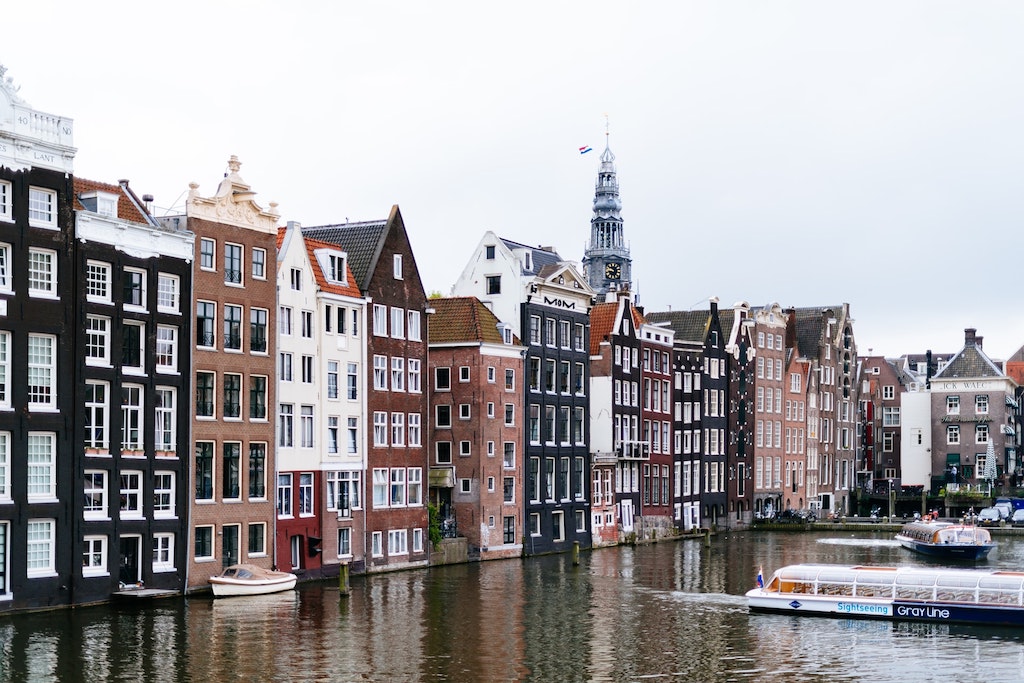
Mannheim, Germany
Since you’re enjoying a holiday on the move, celebrating the wonder of travel and transport, a stop at Mannheim feels wholly appropriate. This is because Mannheim is a city of innovation and invention, particularly in the field of mobility. Did you know that the bicycle, car and tractor were all invented in Mannheim?
As such, it would be rude not to stop by Mannheim on your cruise of this most famous river, and check out the city’s Technoseum. Nope, not a homage to all things four-on-the-floor and repetitive (although the country is pretty good at that, too!), but rather, a museum dedicated to innovation and technology.
Since you’re on a cruise and celebrating the Rhine, you should also check out Mannheim’s famous water tower, the Wassrturm, an emblem of the city. And if your children are travelling with you, make sure you take them to Luisenpark, widely considered to be one of the loveliest parks in Europe. This beautiful, sprawling space has a gorgeous range of attractions including a rose garden, an arboretum, greenhouses, and a Chinese garden.
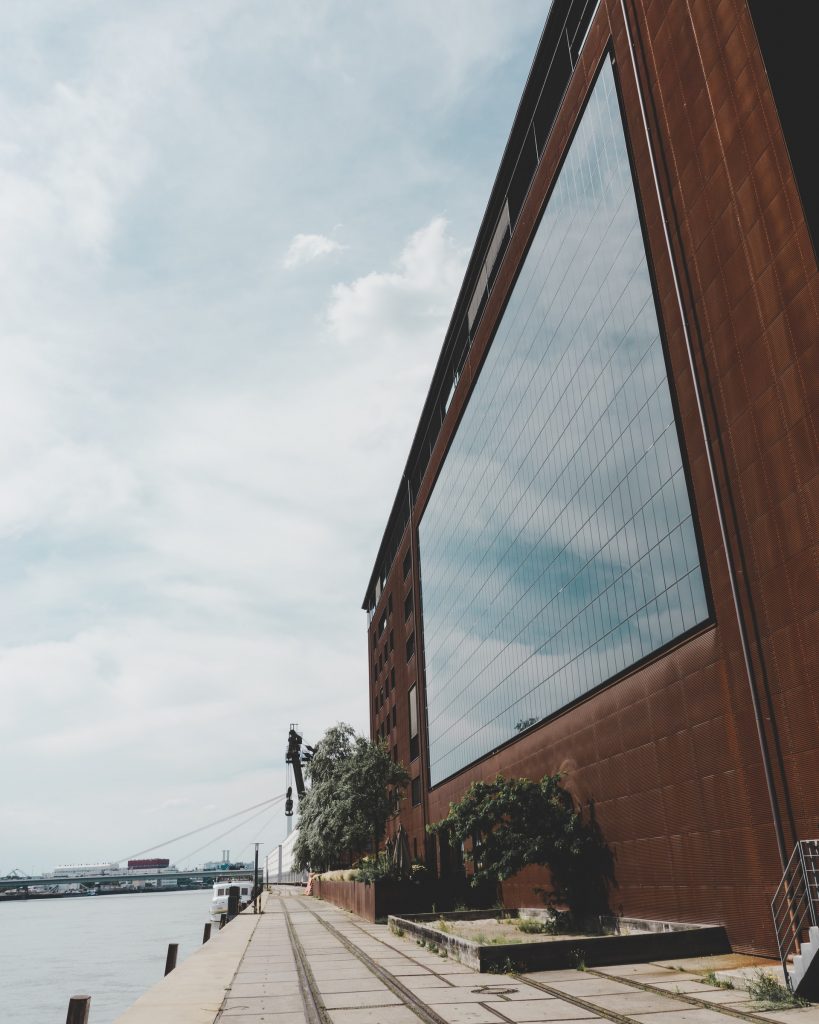
Strasbourg, France
Strasbourg is a town that perfectly blends French and German architectural styles, and offers a fascinating insight into historical relations between the two countries. In fact, the city changed nationality four times between 1870 and 1945, and is symbolic of postwar European unity and the forging of intracontinental alliances.
It’s also one of the most common ports for the departure of a crusie along the Rhine; the river forms the border between France and Germany with Strasbourg sitting elegantly on the French side, and for those keen to tick two countries off their bucket list in quick succession, this is where you should board.
One of the most fascinating ways you can appreciate this blending of cultures is through Strasbourg’s cuisine, which takes influence from both France and Germany.
Try typical Alsatian dishes, a fascinating mix of flavours, ingredients (pork is heavily featured in Alsace cooking) and techniques, at either Maison des Tanneurs dite Gerwerstub, La Vieille Enseigne or Au Pont du Corbeau, three of the finest proponents of this hybrid cuisine in the city. Make sure you order the Coq au Riesling, Tarte Flambee and Fish Sauerkraut, in particular!
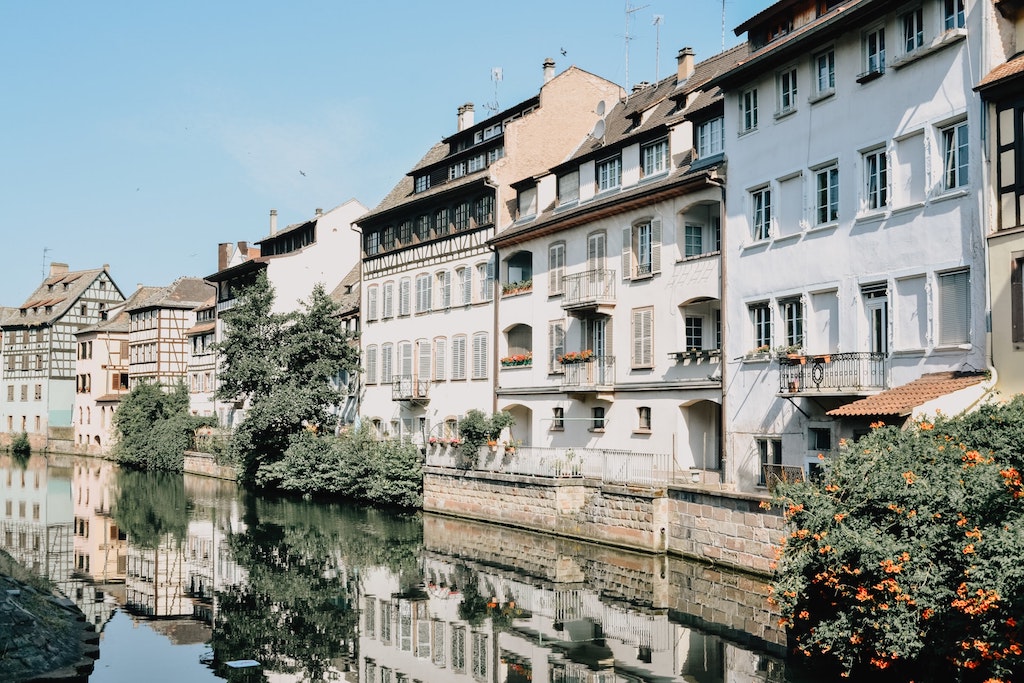
Basel, Switzerland
This Swiss city lies near the border of Germany and France on the Rhine River, and encapsulates a little of each culture, melding them into one unique proposition.
Because of its proximity to Germany and France, Basel is one of the most frequently visited destinations on a cruise of the Rhine, and the city is an eminently welcoming place to touch base. From its medieval architecture and thriving art scene (be sure to check out Kunstmuseum Basel, its leading art gallery housing works by Van Gogh, Picasso, Gauguin and more) to food markets and museums, Basel has so much to offer. Its most prominent medieval treasures include the Rathaus City Hall and Old Town Square (Marktplatz), two must-see sites.
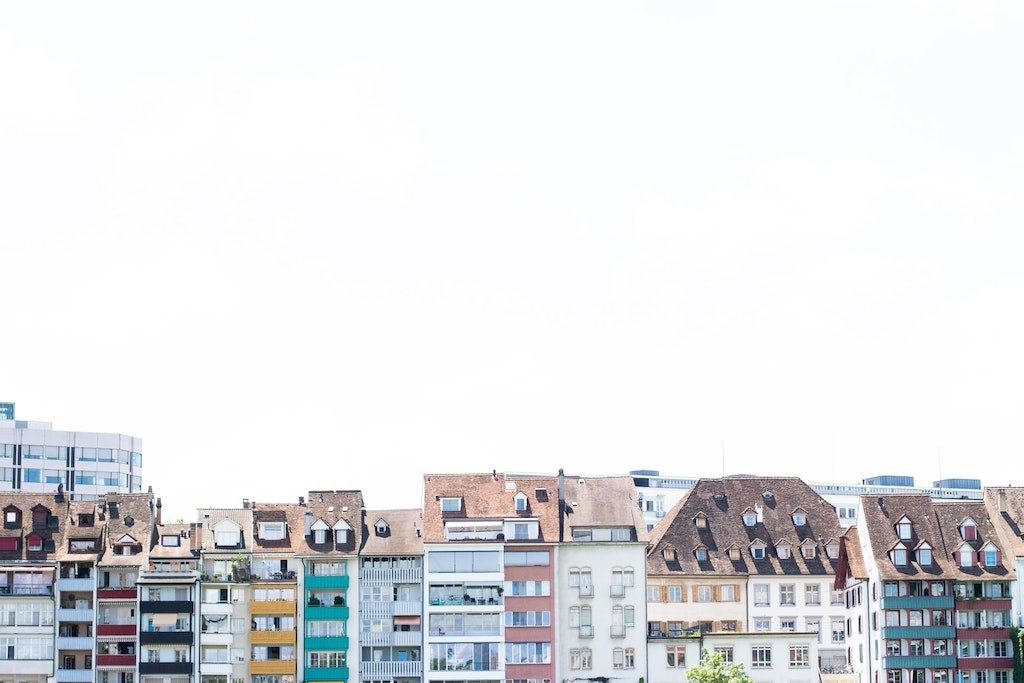
Cologne, Germany
Cologne is one of the busiest cities that you’ll come across along the Rhine (the official tourist board even bill it as ‘the Rhine metropolis’), but that doesn’t mean it’s a hectic place to drop anchor. Quite the opposite, in fact; it’s a regal, sophisticated place to spend time, famed for its incredible Cologne Cathedral (Kölner Dom), which is just one of a whopping twelve Romanesque churches in Cologne. Accordingly, the skyline is defined by spires, all visible from the Rhine, with the Cologne Cathedral right on its banks.
Culturally, the city packs an almighty punch, too. Cologne University is the oldest in Europe, and the city boasts several world class museums and art galleries, including the Wallraf-Richartz & Ludwig Museums. For art lovers, there are few better places to spend an afternoon!
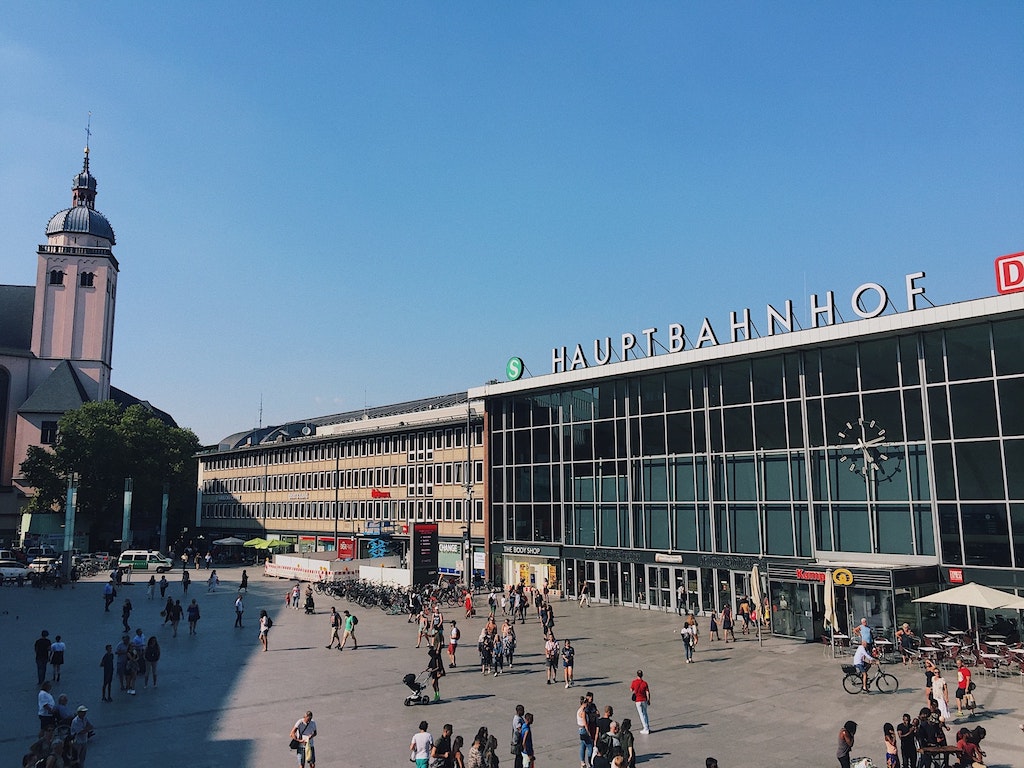
Koblenz, Germany
Sitting at the confluence of the Rhine and Moselle rivers, Koblenz is a city steeped in history and natural beauty. One of the most iconic landmarks here is the Deutsches Eck (German Corner), where a monumental equestrian statue of Emperor William I stands proudly, symbolising German unity. This is also where the two rivers meet, creating a picturesque and historically significant spot.
Koblenz is home to the Ehrenbreitstein Fortress, one of the largest preserved fortresses in Europe. Accessible via a scenic cable car ride across the Rhine, the fortress offers breathtaking views of the river and the surrounding landscape. The city’s charming old town, with its narrow streets and half-timbered houses, is perfect for a leisurely stroll. Don’t miss the Basilica of St. Castor, the oldest church in Koblenz, which dates back to the 9th century.
For those interested in wine, the nearby Moselle Valley is renowned for its vineyards and wine production, particularly Riesling. A visit to a local winery for a tasting session is a delightful way to experience the region’s viticultural heritage.
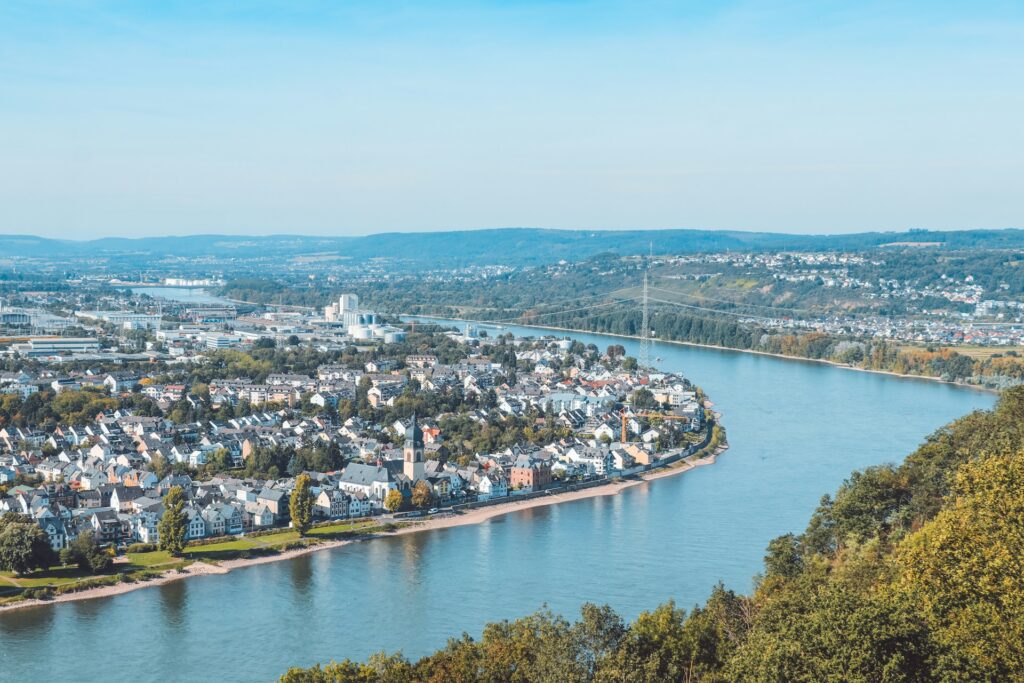
Rotterdam, The Netherlands
Though the Rhine certainly isn’t cyclical in make-up, this article certainly is, so we end where we began; in the Netherlands.
As the river makes its way to the North Sea, it passes through Rotterdam, a city known for its modern architecture and vibrant cultural scene. Rotterdam is one of the largest ports in the world, and its maritime heritage is evident throughout the city. The futuristic skyline, featuring landmarks such as the Erasmus Bridge and the Cube Houses, is a testament to the city’s innovative spirit.
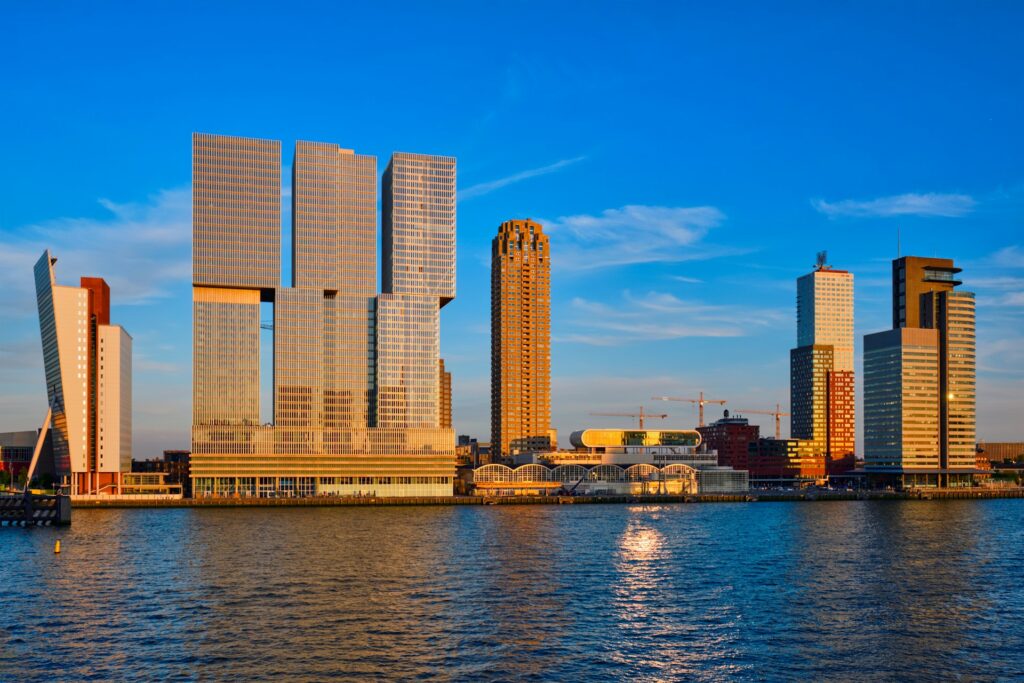
A visit to the Maritime Museum offers a deep dive into Rotterdam’s seafaring history, with exhibits that appeal to both adults and children. For a panoramic view of the city and its bustling port, head to the Euromast, an observation tower that stands 185 metres tall. The adventurous can even abseil down the tower for an adrenaline rush.
Rotterdam is also a hub for contemporary art and culture. The Museum Boijmans Van Beuningen houses an impressive collection of artworks ranging from the Middle Ages to modern times, including pieces by Van Gogh, Rembrandt, and Dalí. The city’s vibrant food scene is best experienced at the Markthal, an architectural marvel that combines a food market with residential apartments. Here, you can sample a variety of Dutch and international delicacies.
And with the cruise ship’s gentle motion rocking us and some of those Dutch delicacies rather weighing us down, we really do think it’s time for a nap now. See ya!

